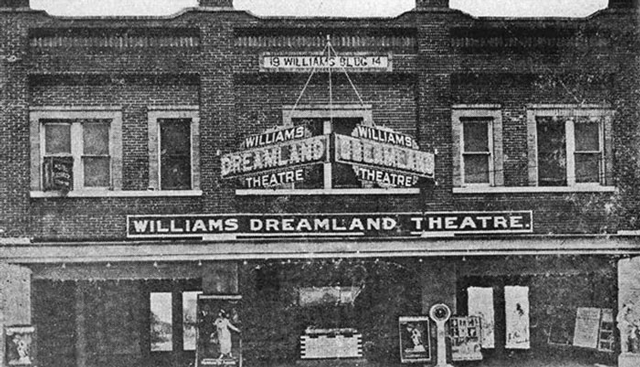Reviving American History

February 13, 2017
Written by Katrina Hightower
Katrina Hightower is a UWM Student studying Information Technology. One of her passions is uncovering stories of Black American history, such as the one she shares below. Hear more about Katrina’s experience finding a career through IT United’s career fair on our Living Local podcast.
It’s Black History Month, the time where America takes twenty eight days to recognize the accomplishments of Black Americans.
Every year we hear about the same Black American icons: Martin Luther King Jr., Rosa Parks, Frederick Douglass, and Harriet Tubman. The accomplishments of these noble men and women, who fought in their unique ways for the rights of Black Americans, can never be diminished or underestimated. However, why is it that we only hear of a handful of individuals when there are thousands that helped developed America to what it is today? Where are these stories in the history books? How do we study the history of these brave men and women who fought oppression and racism to live, work, and love in a society that did not want them? February may be the month to recognize Black History, but twenty-eight days is not enough to honor the thousands of contributions and sacrifices by Black Americans who fought for the equality and freedoms of all men and women in America.
Seeing how people lived, communed, worshiped, and fought for their rights fascinates my historical curiosity. My journey toward understanding a more complete picture of Black American history started when I was a student at Howard University. My hypothesis: if Black Americans could build a successful University like Howard, surely there had to be successfully-run businesses and towns. My curiosity led me to the discovery of Black Wall Street.
The Greenwood District of Tulsa, OK was the pinnacle of the American Dream. The year was 1921, segregation was the social norm, Jim Crow was synonymous with state and federal laws, and Black Americans were considered second-class citizens. Despite this adversity, there was hope that the booming business district, Greenwood, famously known as “Black Wall Street,” could be the epicenter of economics, business, self-reliance, and the economic strength of Black America. Constant population growth, healthy business competition, and a vast selection of a variety of stores gave black consumers discrimination-free shopping options.
On May 31, 1921, racial tension around the success of the Greenwood district hit its peak, and the alleged assault of a white woman by a black man caused the Tulsa race riots, killing hundreds, leaving thousands of people homeless, and levelling the businesses of Greenwood. If you do a Google search of Black Wall Street, this is the story you will get: a thriving business district brought to its knees by hate and violence.
I knew there had to be more. What were the types of businesses that established over a decade of success? Who were the owners? How did this district thrive during one of the most racially-driven eras of American History?
To answer any of these questions, you have to love research. To find the details of the lives of the people who built the Greenwood district and made it successful, you must have a passion to thoroughly attempt to discover their artifacts and piece together their stories.
This is what I’m working on. It’s my passion. However, I can’t help but wonder: Why isn’t the story of Black Wall Street taught alongside the creation of American cities in schools? Why did it take so long to discover that Black American women were vital to the launch of the first man in space? Why is the exploration and appreciation of Black History regulated to only a month?
Black History is American History. The stories and achievements of these hidden figures can no longer stay silent. Diversity built America, and it is diversity that will continue her growth.

Have something to say? LEAVE A COMMENT:
Your email address will not be published. All fields Required.
United Way of Greater Milwaukee & Waukehsa County blog and social media presence is designed as a source for information, sharing and collaboration about United Way and health and human service related topics. As part of our commitment to our readers, we expect all posters to abide by the following rules:
• Posts and comments should be on topic, conversational, and serve to educate or entertain
• Posts and comments may not be unlawful, fraudulent, threatening, libelous, defamatory, discriminatory, harassing, obscene or otherwise rude or in poor taste
• Posts and comments may not be used for any commercial purpose or otherwise to promote any outside organization or its activities
United Way of Greater Milwaukee & Waukesha County reserves the right, at our discretion, to remove any post or to revoke a user’s privilege to post to our page. Comments found to be in conflict with the guidelines above will be removed promptly.
Comments are not necessarily those of United Way of Greater Milwaukee & Waukesha County and its employees and we do not guarantee the accuracy of these posts.